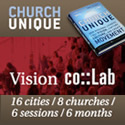Innovators, Early Adopters, Early/Late Majority, Laggards: Which are You?
- Posted by: Todd
- Posted on: Mon, December 06, 2004
- Viewed 125
- (49) comments so far
There is a fairly well recognized theory by Everett Rogers in the business and marketing worlds about how new ideas eventually get implemented to our everyday lives. This theory holds true in many areas; from our cultural fads, consumer buying habits... and even our church life. Here's the premise:
For any new idea, there is a group of innovators. Innovators are defined as the first 5-10% of the people who first adopt any given idea. They are the ones who usually come up with the idea in the first place and refine the idea so that it is something that works. Innovators are venturesome; they are the most willing group to try something new and take the initial risk to try something out. They are also influencers... they keep in contact with many others in their area of expertise.
The next group, the early adopters are about 10-15% of us. These people are the trend-setters. They are the ones who are aggressively looking for new ideas to implement. They might not be the ones coming up with the ideas or innovations, but they have their eye on the innovators to see what they will do next. They'll quickly snatch up an innovators idea and test it out themselves.
The early majority (about 30% of us) wait a little longer to make our decision. Actually, if they're not actively searching out new ideas (like the early adopters)they might wait to see the first bit of advertising on a product or service, or get the recommendation of a friend before they jump in. But still, they want to be in on the ground floor. Early majority people still consider themselves 'cutting-edge', they just want to make sure the idea has worked out in some other places before they try it.
The late majority (another 30% of us) wait still longer to get on the band wagon. They still get on... some are excited, some are skeptical. But by this stage of the game, there is growing pressure to 'not miss out'.
The last group, the laggards, (about 20% of us) are true traditionalists. They are generally not interested in new ideas/products and are the last group of us to buy into new ideas.
Does this model hold up for the first group of questions I stated above? I think it does to a large degree. Let's take the "40 Days of Purpose" campaign for example.
INNOVATORS: Rick Warren & Saddleback Church
EARLY ADOPTERS: The very first churches that did the campaign
EARLY MAJORITY: Those churches that have already completed the campaign
LATE MAJORITY: Those churches who are signed up to do a future campaign
LAGGARDS: Those churches who will do the campaign in 2006-2007 or never
Now, of course, there are some churches who will never do the 40 days of purpose campaign for various reasons (theological, philosophical, they don't like Rick Warren, etc.) That doesn't mean they are laggards in every area. (So I'm not using this scenario as a blanket statement for everyone).
Where do you consider yourself and your church (note: You might be in a different group as a leader than what your church is in)? Do you agree with the above scenario or innovators, early adoptors, etc.? If not, what is your theory? Please give your ideas below. I'd like to hear from as many of you as possible today. I'll use many of your thoughts and ideas as I develop this series.
Has your church participated in a 40 Days of Purpose Campaign? Or even a 40 Days of Community Campaign? Does your church use video projection, or evan IMAG in your services? Are you using multi-service/ multi-format (worship) approach? Are you a ‘one church in multiple locations’ multi-site’ church or are you considering it? Do you use terms such as ‘seeker sensitive’ or ‘seeker targeted’ without even thinking? New ideas. New philosophies. New programs. New formats. New ways of doing church. How many of the above questions did you answer ‘yes’ to? All of these issues are fairly new in the 21st century church. But how did these trends come about? Where do they come from? How did they start? And why do we find that so many churches are taking the same ‘new’ approach in so many areas? I find this subject fascinating, and we’ll be digging deeper into the whole idea of innovation in the church for the next few Mondays here in MMI and in the MMI blog…

-----
Comments
if you want a Globally Recognized Avatar (the images next to your profile) get them here. Once you sign up, they will displayed on any website that supports them.






Tonia Jernigan on Fri, December 17, 2004
The problem is many have different callings on their life. One who has many gifts and no character to match their gift will draw only after their own kind. Love draws love, pride draws more pride.
Bernie Dehler on Tue, December 21, 2004
Todd says:
“Has your church participated in a 40 Days of Purpose Campaign?”
The church I attend did it, but I wasn’t very impressed with the book. Overall, I thought it was too wordy and repetitive. It appeared to me that there was some good material, but then it was stretched out to cover a span of 40 days. I don’t think the book would sell if it wasn’t for the celebrity status of the author, Rick Warren.
...Bernie
http://www.FreeGoodews.com
Harry Miller on Tue, January 04, 2005
I have not read the book, but I did look it over at Cosco recently. It looks like a typical protestant evangelical new believers discipleship study ending with the mission. In the beginning these seemed to work well, but then came the time for Jesus to lead instead of the church. Going from the nipple to the meat or going from the women’s job to the man’s job. The focus here is on Jesus as the model.
Samuel H. Shafer on Tue, February 01, 2005
Dear Todd,
I recently read your article on Innovators, Adaptors, and Laggards. To be honest with you, I think much of the church - including myself - is dealing with baby pabulum. I would encourage you to read the book Sacred Rage “The Wrath of Militant Terrorists” by Robin Wright.The world is in a state of massive revolution with terorists being willing to place their lives on the line for a revolution that is far from holy. Meanwhile, the Christian church wrestles with 40 days of purpose and how to att ract “seekers.” I am hoping the church would come to a point where we can again have people prepared to put their lives on the line in a radical way to bring not only the Good News - but physical relief and justice to a poor and hurting world. If we are to save our world from massive destruction in the ensuing years I believe we will need to hear more innovative ideas that are at work bringing the living Christ to the many severe injustices of our day.
In His Love,
Samuel H. Shafer {o
Page 4 of 4 pages « First < 2 3 4
Post a Comment